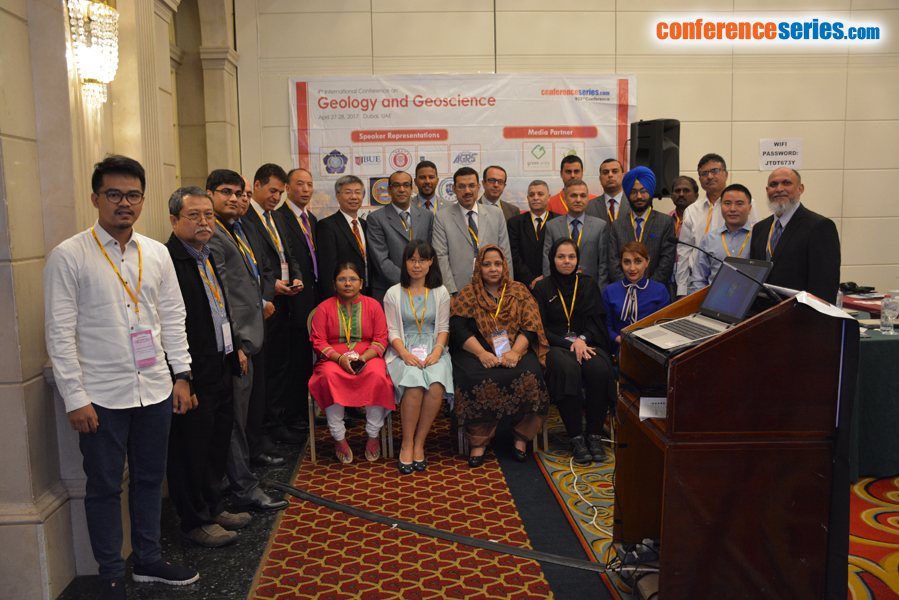
Muhamed F Omer
Salahaddin University, Iraq
Title: Facies analysis and depositional environments of Khabour formation from Iraqi Kurdistan region-Northern Iraq
Biography
Biography: Muhamed F Omer
Abstract
The Khabour formation is the oldest exposed rock unit in Iraq (Ordovician) and was studied in two sections at Chalky Nasara and Ora localities Northern Iraq. It is comprised of 806 thick sandstone-shale cyclic alternations. The formation sediment in type locality Chalky Nasara section can be divided into three main units A, B and C, depending on the kinds of sediments, vertical changes and the sedimentary structures. These three units also can be divided into numbers of main facies. Combined lithofacies/ichnofacies analysis of the Khabour formation allows recognition of 8 facies associations from type locality and subdivided into 23 facies. The prodelta deposits are mainly characterized by heterolithic strata (wavy and lenticular bedded), the trace fossils assemblages is dominated by deposits-feeder burrows skolithos Thalassinoids isp, Planolites isp, and Macaronichnus. isp. The delta front deposits consists of (planar cross-bedded, thick-bedded, very large scale and tabular cross-bedded) sandstone facies. Wave and storm dominated deposits are found in Khabour formation, including sands deposited by storm-generated, wind driven currents, by low to high intensity oscillatory flows, and by storm-initiated density flows, which deposits upper, middle and lower shoreface. Changing of sea level during (TST) coupled with upwelling currents created starved settings which was favorable for the deposition of thin to medium bedded of phosphatic sandstone associated with a black shale pristine phosphorite in Chalky Nasara section. Lowering of wave base during relative sea-level fall reworked pristine facies into granular deposits and produce phosphatic large-scale planar cross-bedded sandstone in Ora section. The age of the formation is determined according to recognize three ichnotaxa of cruziana including Goldfussi, Furcifera and Rugosa Isp. This reflects upper tremadocian stages of lower ordovician for the formation.
Speaker Presentations
Speaker PDFs
Speaker PPTs Click Here



